Exploring the Complexities of Addiction Stigma
Addiction is often misunderstood, leading to pervasive stigma that profoundly affects those with substance use disorders (SUDs). This stigma not only marginalizes individuals but also acts as a significant barrier to treatment and recovery. In this article, we’ll delve into the nuances of addiction-related stigma, examining its roots, effects, and strategies to combat these entrenched societal views.
Defining Social Stigma and Its Relationship with Addiction
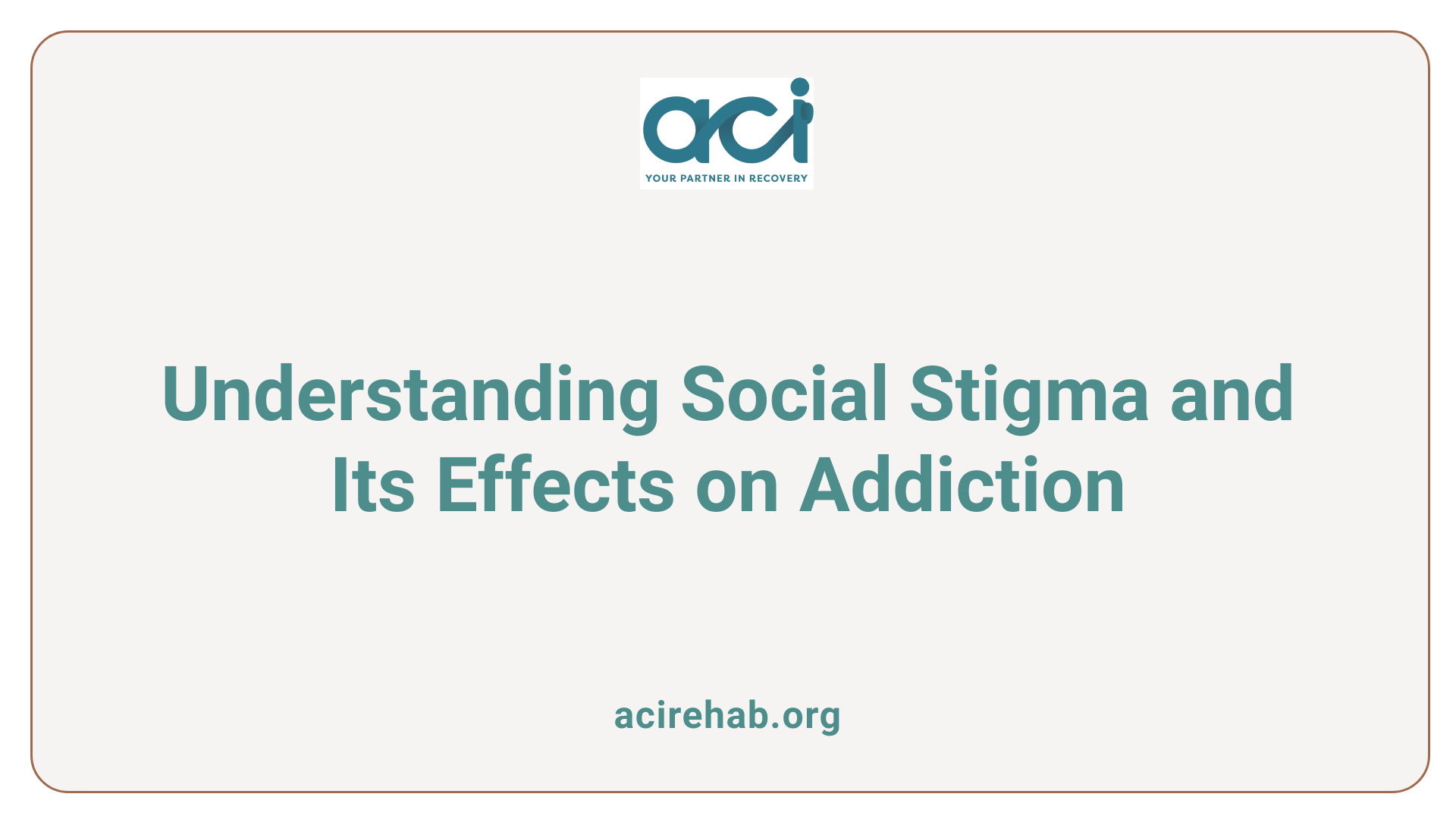
What is social stigma?
Social stigma encompasses the negative stereotypes, prejudice, and discrimination that individuals encounter due to specific characteristics or conditions. This form of stigma can greatly affect a person’s quality of life and mental health. It often results in dehumanizing labels and stereotypes that can further alienate affected individuals from society, leading to feelings of shame and isolation.
How does social stigma relate to addiction?
In the context of addiction, social stigma can be particularly detrimental. Those struggling with substance use disorders are often labeled as morally inferior or weak, which fosters a sense of isolation. According to the World Health Organization, individuals with addiction face not only public discrimination but also negative perceptions from healthcare providers, family, and friends. This stigma can exacerbate psychological distress, leading to poorer mental and overall health outcomes.
The implications of stigma are profound. It creates barriers to treatment, as many individuals fear judgment when seeking help. Consequently, the stigma surrounding addiction not only impacts individuals but also extends to their families and communities, making it essential to address these misconceptions through education and advocacy initiatives.
| Type of Stigma | Description | Impact on Individuals |
|---|---|---|
| Public Stigma | Negative societal attitudes towards addiction | Leads to discrimination and social isolation |
| Self-Stigma | Internalized negative beliefs about oneself | Decreased self-esteem and reluctance to seek help |
| Structural Stigma | Institutional policies that perpetuate stigma | Limited access to care and resources |
Unraveling the Stigmas Around Addiction
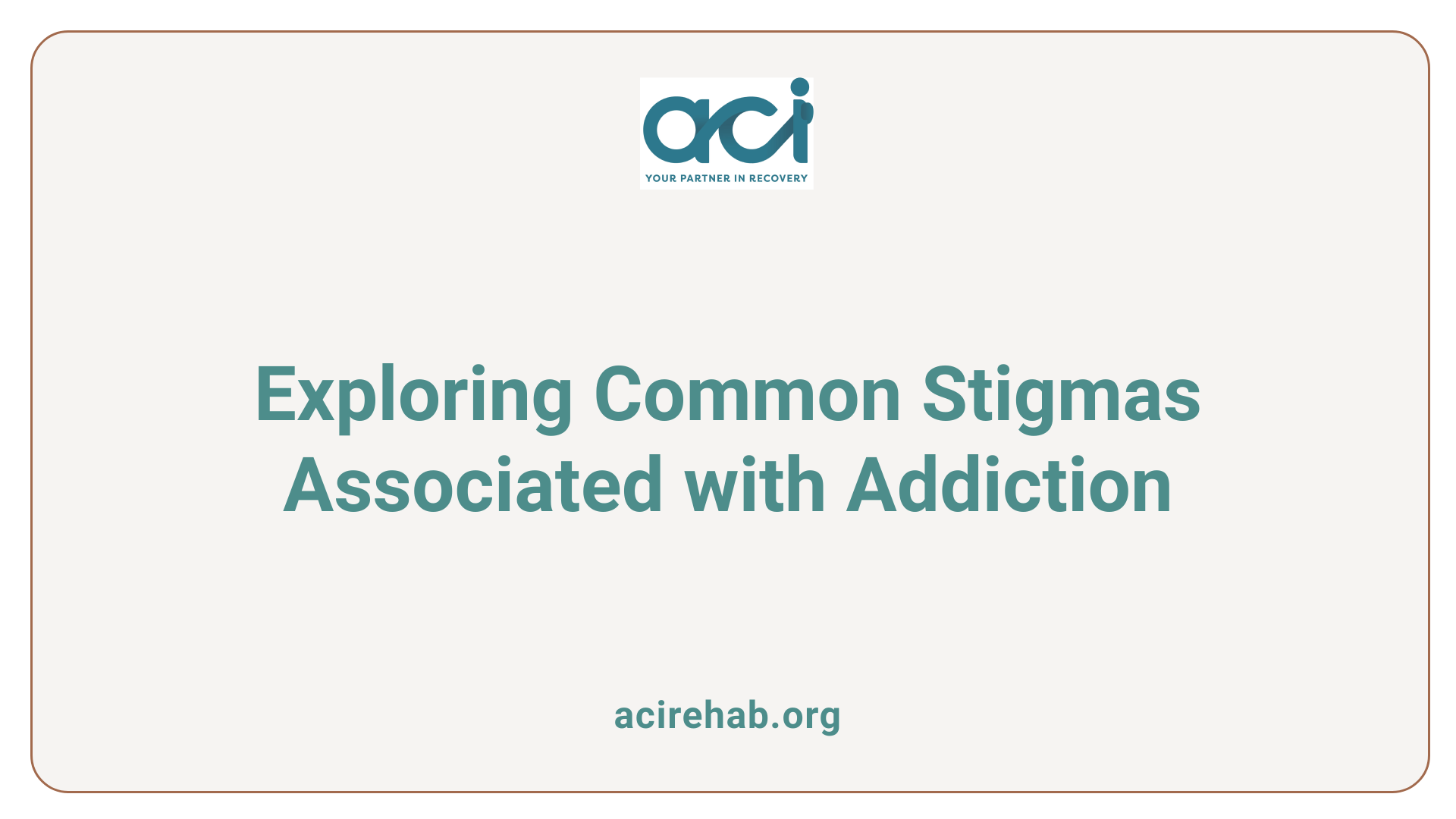
What are the stigmas around addiction?
The stigmas surrounding addiction are deeply rooted in misconceptions that frame substance use disorders as personal failures rather than chronic, treatable medical conditions. Many people perceive addiction as a moral weakness or a lack of self-control, which contributes to widespread discrimination against those affected. This stigma manifests in both negative societal attitudes and prejudices expressed by healthcare providers, creating significant barriers to care.
Terms such as "junkie" or "substance abuser" serve to dehumanize individuals, reinforcing negative stereotypes. Research indicates that language plays a crucial role in shaping public perception. For example, using terms like "a person with a substance use disorder" helps to improve sympathy and understanding.
Impact of stigmatizing language on perception and treatment
Stigmatizing language can lead to negative treatment outcomes, as healthcare professionals may unconsciously hold biases against individuals labeled in derogatory terms. Studies show that healthcare providers, influenced by societal stigma, often hesitate to engage with individuals with substance use disorders, which can result in insufficient treatment and poorer overall health outcomes.
Racial disparities also exacerbate this issue; overwhelming evidence shows marginalized communities face compounded stigma, with less access to care and support resources. To fight stigma effectively, adopting person-first language and promoting education about addiction is essential. By doing so, society can begin to dismantle negative stereotypes and foster a more inclusive environment for those seeking help.
Alcoholism: A Case Study in Addiction Stigma
What is the stigma associated with alcoholism?
The stigma associated with alcoholism, or alcohol use disorder (AUD), manifests in multiple forms, impacting individuals’ willingness to seek help. Public stigma involves negative stereotypes and prejudices, leading to discrimination and isolation. Many people perceive alcohol use through a moral lens, viewing it as a personal failing rather than a complex medical condition influenced by various factors.
Healthcare professionals often perpetuate this stigma by trivializing alcoholism as a lifestyle choice. This viewpoint can deter individuals from seeking treatment, fearing judgment or downplaying the seriousness of their condition. Studies show that nearly three-quarters of primary care physicians hold negative attitudes towards those with substance use disorders, leading to poor interactions and reduced care.
Self-stigma, where individuals internalize these societal attitudes, can lead to feelings of shame and worthlessness. This creates a vicious cycle, compounding their struggle with addiction and diminishing their self-esteem.
Structural stigma fuels barriers to accessing healthcare services, making it increasingly challenging for those with AUD to receive the necessary support for recovery. Understanding and addressing these multifaceted stigma issues is crucial for enhancing treatment engagement and improving outcomes.
Examples of Social Stigma Beyond Addiction
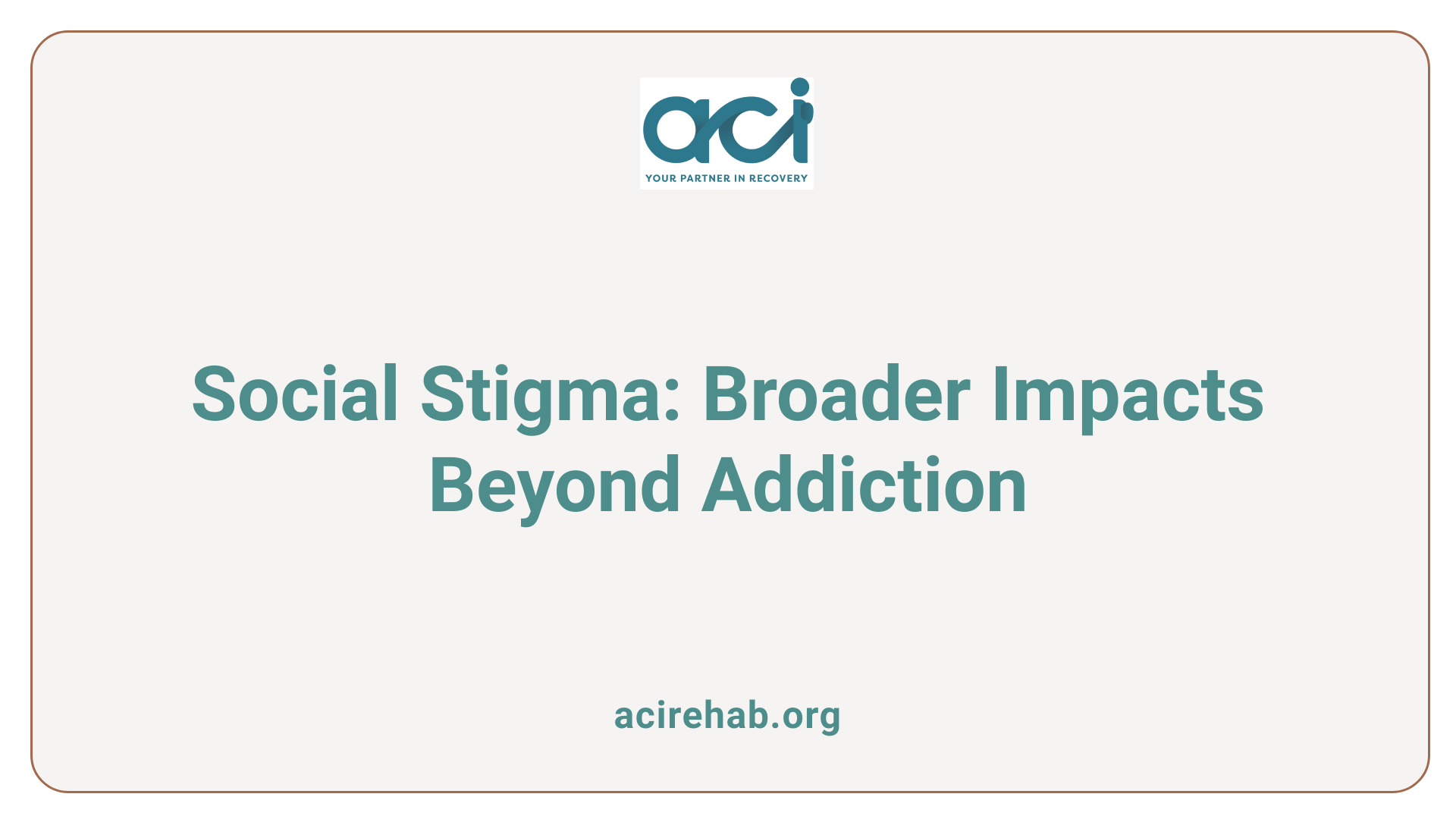
Can you provide examples of social stigma?
Social stigma can manifest in various forms across different groups of people. Examples include:
- Physical disabilities: Individuals with visible disabilities often face barriers in employment and social interactions, leading to isolation.
- Mental illnesses: People diagnosed with mental health conditions may be perceived as dangerous or unreliable, which can discourage them from seeking help.
- Sexual orientation: Those identifying as LGBTQIA+ frequently encounter discrimination, affecting their mental health and acceptance in society.
- Obesity: People with obesity may experience bias that restricts their job prospects and access to healthcare services, further complicating their health outcomes.
How do these relate to perceived societal norms?
Erving Goffman identified three categories of stigma: physical differences, personal traits like addiction, and tribal stigmas associated with race or religion. Societal perceptions and stereotypes can significantly shape how individuals are viewed and treated. For example, children absorbing negative stereotypes about mental illness or disabilities from their environment may develop prejudice, perpetuating a cycle of stigma. Addressing these issues requires education, advocacy, and strong legislative measures to promote inclusion and understanding, counteracting the detrimental impacts of stigma on mental and physical health.
Strategies to Overcome Addiction Stigma
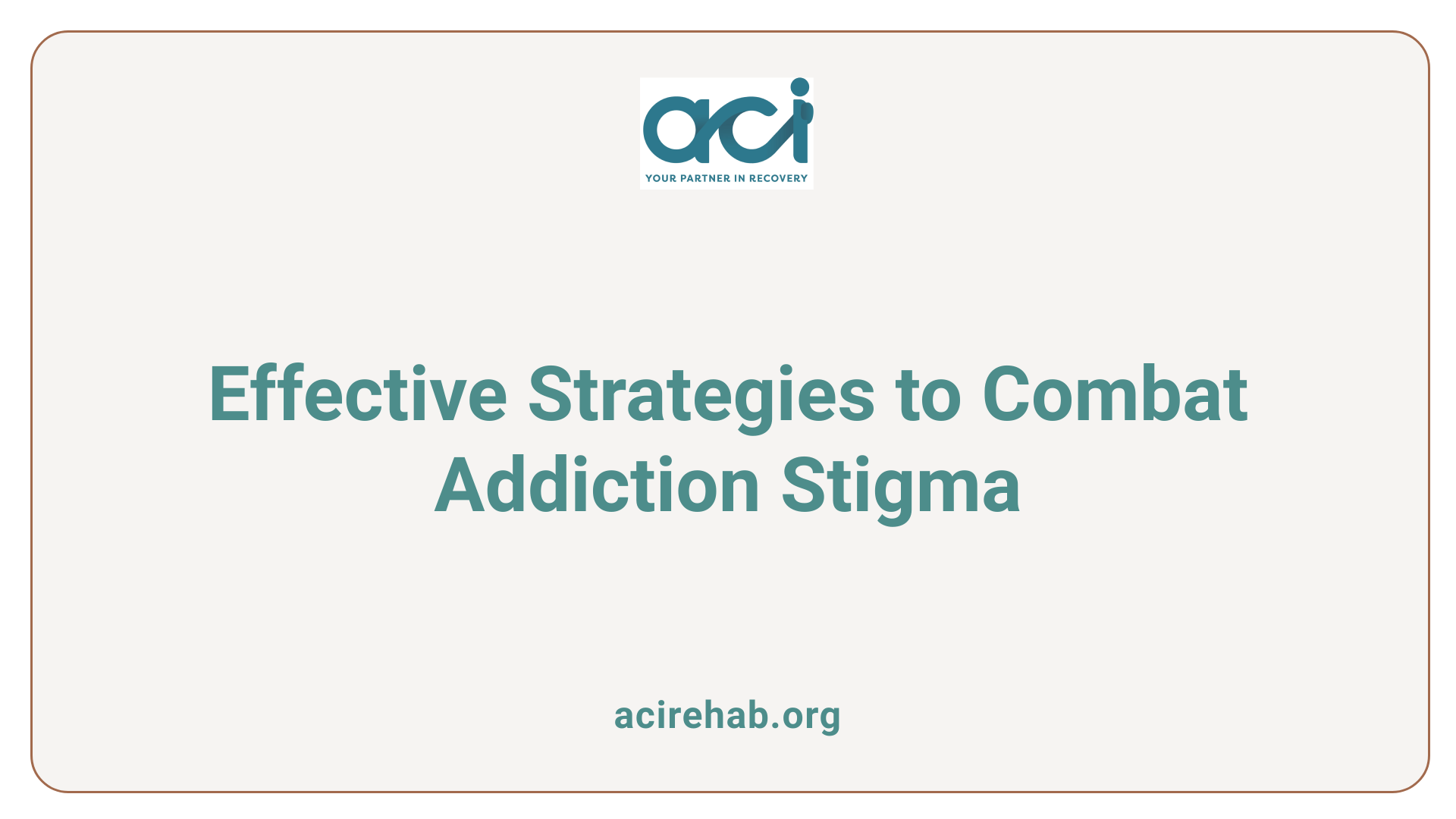
How can we overcome the stigma of addiction?
To effectively tackle the stigma surrounding addiction, a fundamental change in the narrative about substance use disorders is necessary. This begins with the adoption of person-first language, which emphasizes the humanity of individuals rather than defining them by their addiction.
Healthcare professionals are key players in transforming public perceptions. By recognizing addiction as a treatable medical condition rather than a moral failing, they can encourage more compassionate and informed conversations. Community engagement efforts such as awareness campaigns play a crucial role in this shift, sharing personal recovery stories to humanize the struggles associated with addiction.
Furthermore, advocating for policies that ensure equitable access to mental health and substance use treatment is essential. This means not only normalizing addiction as a health concern but also addressing systemic discrimination that affects care availability. Through educational initiatives, we can work to dismantle the stereotypes and misconceptions that lead to stigma, creating a more supportive environment that fosters recovery.
In summary, a multifaceted approach that combines advocacy, education, and systemic policy change is vital for reducing addiction stigma and improving treatment engagement.
Language: Its Influence on Addiction Perceptions
How does language influence perceptions of addiction?
Language significantly influences perceptions of addiction through the framing and terminology used to describe substance use disorders (SUDs). Stigmatizing language, such as referring to individuals as "substance abusers" or "junkies," fosters negative stereotypes. These terms can create a narrative that addiction is a moral failing or a result of personal weakness rather than a complex health issue.
Historical portrayals during events like the "war on drugs" have reinforced harmful public beliefs that addiction is primarily a criminal issue, leading to punitive policies that disproportionately impact marginalized communities. Media representations often amplify these views, emphasizing notions of dangerousness and moral decay associated with addiction. This not only shapes societal attitudes but also affects how individuals perceive their own addiction.
Moreover, stigmatizing language can obstruct access to treatment and recovery options. When people feel judged or dehumanized, they may hesitate to seek help, exacerbating their struggles. Shifting to person-first language, such as "a person with a substance use disorder," emphasizes humanity and encourages empathy, potentially improving public perceptions and reducing stigma.
Understanding the Multifaceted Aspects of Stigma
Social, Self, and Structural Aspects of Stigma
Stigma surrounding substance use disorders manifests in three primary forms: social stigma, self-stigma, and structural stigma.
-
Social Stigma
- Arises from negative societal perceptions and stereotypes about individuals with substance use disorders.
- Leads to exclusion, discrimination, and a reluctance from communities to engage with or support affected individuals.
-
Self-Stigma
- Occurs when individuals internalize the societal stigma, leading to feelings of shame and reduced self-worth.
- This internalization can hinder their willingness to seek help or engage with support networks.
-
Structural Stigma
- Involves systemic barriers embedded in laws and institutional policies, which prevent equitable access to treatment and recovery resources.
- For example, discriminatory practices in employment and healthcare exacerbate the challenges individuals face.
Impact on Treatment and Recovery
The interplay of these stigma types significantly hampers effective treatment and recovery for individuals with substance use disorders. Fear of judgment leads many to delay or avoid seeking care. Research indicates that only a fraction of those requiring assistance actually receive it, with stigma explicitly contributing to these disparities in treatment access. Addressing stigma is essential for creating a supportive environment where individuals feel empowered to pursue recovery without fear of discrimination.
Tackling Structural Stigma in Addiction Treatment
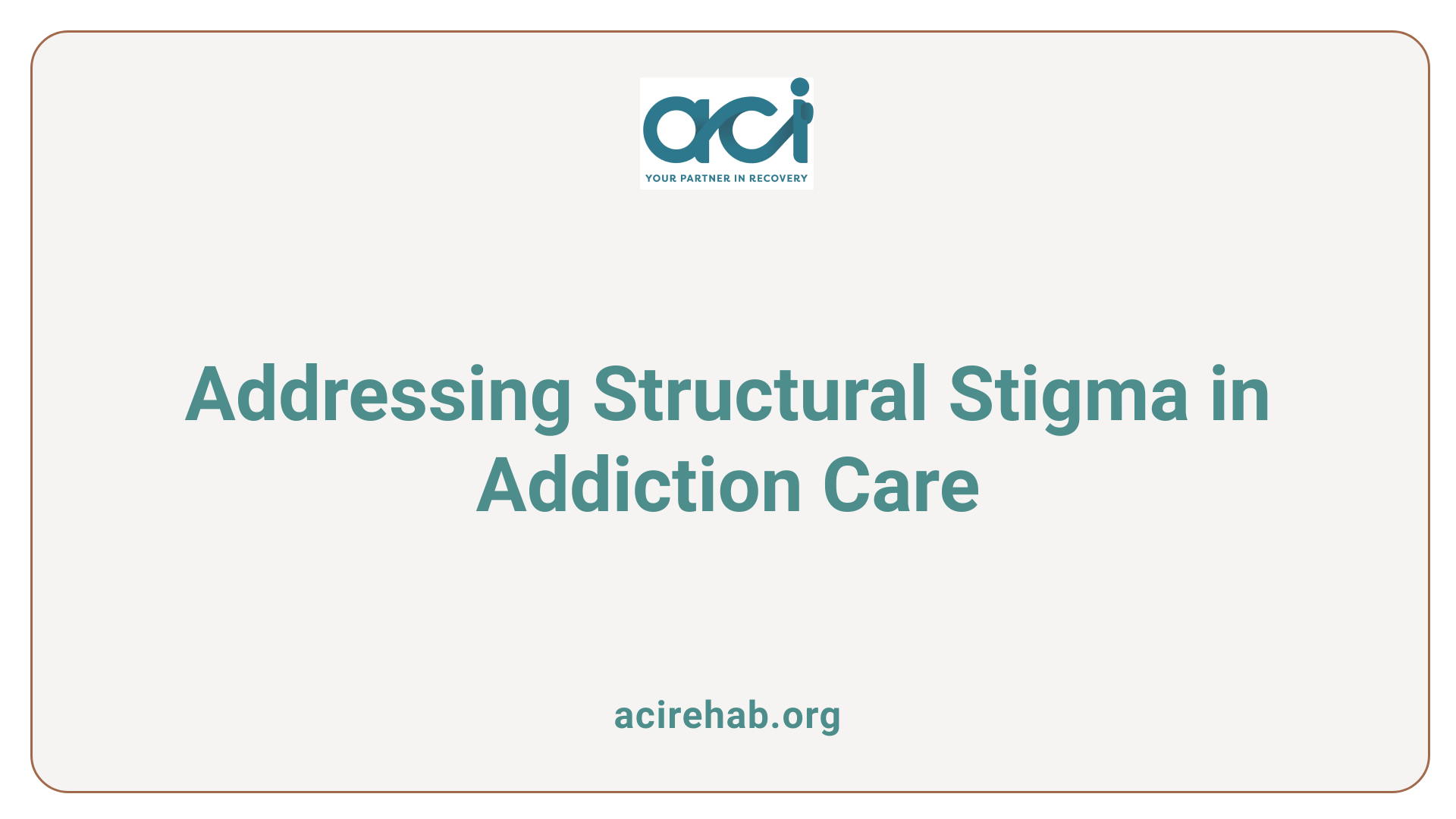
Influence of socio-economic factors on stigma
The intersection of socio-economic factors and stigma plays a critical role in shaping the experiences of individuals with substance use disorders. Those from economically disadvantaged backgrounds may face increased discrimination, which compounds stigma. This group often lacks access to quality treatment services, leading to higher rates of addiction and overdose in these communities. Systemic issues such as poverty, unemployment, and low levels of education correlate strongly with substance use, indicating the need for targeted interventions.
Role of policy and infrastructure
Policies and infrastructure significantly influence stigma related to addiction. Structural stigma manifests through laws and formal policies that discriminate against individuals with substance use disorders. These may include restrictive healthcare policies and inadequate funding for addiction treatment, which can exacerbate negative attitudes.
To combat this, effective policy interventions should aim to enhance accessibility and affordability of treatment services, focusing on recovery-oriented approaches.
| Area | Description | Impact |
|---|---|---|
| Socio-economic Factors | Higher rates of addiction in marginalized communities | Increased stigma and access barriers |
| Policy | Discriminatory laws affecting treatment options | Limits quality care and reinforces stigma |
| Infrastructure | Availability of treatment and support services | Influences community perceptions |
Addressing these aspects is essential for creating a supportive environment conducive to recovery.
A Call to Action
Addressing the stigma surrounding addiction requires both individual and collective efforts to shift perceptions and policies. By prioritizing education, adopting compassionate communication, and integrating person-first language, we can dismantle the barriers that stigma erects. Only through such comprehensive efforts can we foster a more understanding and supportive environment for those affected by substance use disorders, ultimately enhancing treatment outcomes and promoting recovery.
References
- Stigma and Discrimination | National Institute on Drug Abuse (NIDA)
- Reducing the Stigma of Addiction – Johns Hopkins Medicine
- Stigma around drug use – Canada.ca
- Addressing the Stigma of Addiction | Advocacy – Hazelden Betty Ford
- Understanding Stigma of Mental and Substance Use Disorders – NCBI
- Cultural Stigmas and How They Affect Addiction Treatment
- Stigma: Beyond the Numbers | Stop Overdose – CDC
- Stigma toward substance use disorders: a multinational perspective …
- Challenging drug and alcohol stigma | NHS inform
- Addressing Stigma | U.S. Department of Labor

